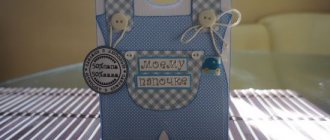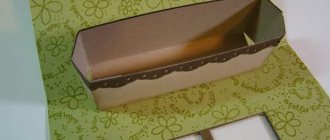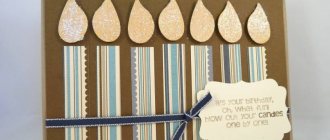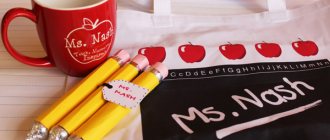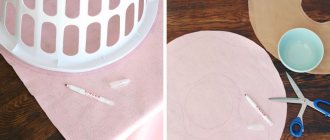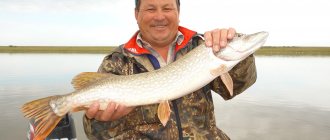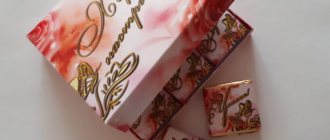Make a gift for your beloved mother or father, grandmother or grandfather, as well as other dear people - what could be more fun and interesting for a child on the eve of the New Year. To make such gifts, a wide variety of materials can be used, and they themselves can be made in the form of various crafts and figurines, souvenirs and other products.
However, if your baby or toddler is interested in, or is taking his first steps in, this type of handicraft such as plasticine modeling, then you should not deny him the pleasure of making plasticine cards as gifts for the New Year.
Website for children and parents
This lesson presents an interesting version of a birthday card.
This is a voluminous composition with flowers and an inscription, which is replete with bright shades. But all the details are not drawn, not cut out of paper, but molded from plasticine. Even from this soft material you can create greeting masterpieces with various ornaments. To get a beautiful postcard, of course, you will need cardboard; it is easiest to stick all the details on it. And you can make any flowers, arrange them on paper in your own way, use your imagination and come up with something of your own. In the process of such work, you will immediately see what shades the child has, what flowers he likes, how he tries to make something unique, put it together and achieve a beautiful result. What you will need for the creative process of creating a postcard:
- the brightest paper from the set, preferably thick cardboard; - green, blue and white plasticine for flowers and floral designs; - yellow plasticine to create an inscription; - a thin stick.
Materials for a bright postcard
Light plasticine is a plastic and soft self-hardening mass . Unlike polymer clay, which hardens in air, this material, after hardening, resembles not plastic, but foam without pores. Crafts do not break or crack. The mass is sold in sealed bags.
To make a card with flowers, prepare:
- bags with light plasticine in green, yellow, orange, brown colors; yellow cardboard;
- decorative tape with floral patterns;
- stamens with bright heads;
- inscription: “Happy Birthday” or sticker, stamp;
- scissors;
- glue.
If there is any modeling material left over, be sure to pack it well. Better yet, make something else with your own hands. For example, a white dove or an aster flower.
How to make a postcard from plasticine.
A handmade postcard is a very popular gift. Such a product can be made not only from colored paper, but also from plasticine. This will create an interesting volumetric effect. You can time such a craft to coincide with any holiday or significant date, for example, March 8th. Naturally, there are no strict recommendations for creating such a gift. It is clear that children will make it for their beloved mothers, aunts and grandmothers, and maybe kindergarten teachers, so any experiments are welcome.
We invite you to make a plasticine postcard with a picture of a mimosa, because this is the most popular plant; everyone associates it with the awakening of nature and International Women's Day.
1. If there is a mimosa sprig in the picture, then yellow and green colors are required, the rest can be chosen as desired.
2. Using the same principle, select the base of the postcard. This could be a rectangle of bright cardboard, regular packaging cardboard, or an old photo frame.
3. From bright soft plasticine, start rolling thin flagella of short length. Make several of these pieces so that you have enough to create a vase.
4. Start attaching bright plasticine strips close to each other, starting from the bottom of the future postcard.
5. Work your way up to form a round or rectangular container.
6. Insert green branches into the hole of the vase. Make them the same way as the blanks for the vase, only from green plasticine.
7. Knead the yellow plasticine in your hands and form many small balls.
8. Stick the yellow mimosa blossoms onto the green branches, trying to distribute them evenly.
9. Another little touch is the congratulatory inscription on the card. Letters can also be made from plasticine. It could be “Happy March 8!” or “Congratulations!” etc.
10. Attach the inscription to the central part.
The final look of the craft.
This is the kind of surprise every child can prepare for their mother or grandmother using ordinary plasticine.
Postcards for school
With schoolchildren, you can make more complex, beautiful, and interesting crafts and cards, which children will be happy to give to their beloved brothers, fathers, and grandfathers. At this age, children deftly and quickly cope with various tasks, combine colors well, cut out and glue parts. They know how to work with different materials, and are happy to bring their fantasies to life and experiment.
Master class “Postcard with St. George’s ribbon and carnation”
The St. George ribbon is a symbol of victory, valor, and honor. That is why such a craft will be a success and will come in handy for Defenders of the Fatherland Day.
For this craft, it is best to stock up on supplies, for example, print out a ribbon that you just need to cut out and stick on a postcard. A school-age child will be able to draw another main element of his gift – a carnation – on his own.
The St. George ribbon can be made from a sheet of colored cardboard, which can be simply supplemented with black stripes.
You can make the base of the card from white or colored cardboard, and simply draw the St. George’s ribbon and carnations and add congratulatory inscriptions to it all.
Possibilities of using appliqué techniques for children
The formation of personality in children begins with the fact that each child forms his own passions and shows creative abilities. According to psychologists, the development of fine motor skills helps to quickly master writing and reading techniques, which is why plasticine is so popular:
- modeling and repetition of familiar forms, which helps develop memory and consolidate new images gradually learned by the child;
- manifestation of creative abilities and the opportunity to develop one’s individuality, creating original masterpieces;
- using the fingertips and receiving new tactile sensations, which stimulates the child’s speech development.
When creating applications, you can use handicrafts as an interesting and exciting process for the child’s learning and speech development. Using plasticine, you can reproduce beautiful postcards and memorable photos, select and implement original and exciting ideas for children.
Tree-flower
The best way to please your mother on Mother's Day is to give her a beautiful flower tree. Essentially, this craft is a topiary. To make it we will need:
Roll three balls of different sizes from paper. Newspaper is best; it holds its shape well. After this, evenly cover the balls with different colors.
Make a trunk and branches from wire, then also cover them with some color (green is best).
Attach the balls to the branches and stick the resulting tree into a pot filled with soil.
Plasticine applications: basic techniques and ideas
Developing a child's imagination and fantasy in the early years of preschool life develops rapidly, but even they need a certain stimulus. Beautiful and unusual crafts, plasticine applications on a cardboard base can be used to decorate your home or at children's exhibitions.
Simple and easy modeling will not take much time and will help diversify preparation for school and the learning process. To implement any idea, you can use different techniques that are accessible to children and adults; they are not difficult to implement and do not require special skills.
Kids can make these flowers
Very young children will also be able to present their flower gift by March 8th. The simplest manufacturing options are when the child is asked to decorate a drawn flower with pieces of plasticine - small colored balls, thin long sausages. They can simply stick them to a picture or make a curly curl. Such pictures-bouquets look very festive.
Schemes for making flowers from plasticine
Older children should familiarize themselves with the schemes by which they can make their own surprise on March 8th. As you can see, a plasticine flower is a really doable task for a child.
Plasticine flower panel
Having familiarized yourself with the manufacturing schemes, you should immediately get down to business. Now we can make a flower panel. For the base we use thick cardboard, unnecessary CDs, plastic lids from containers, buckets of mayonnaise or building materials, boxes of sweets and gifts.
- It turns out to be an original gift that can be hung on the wall or arranged as an entire exhibition in a kindergarten or school classroom.
Flat bouquets made of plasticine
We make flat bouquets from plasticine on thick cardboard. Using various techniques, we can obtain completely realistic flower arrangements.
Volumetric bouquets made of plasticine
Almost everyone can give an unfading rose, a lily, a bouquet of asters or poppies, or a whole basket of roses. Of course, this will take time, but we can get started now!
For the base of a voluminous bouquet, you can use any unnecessary stick, pen refill, or pencil.
To make a vase or basket, a plastic container or jar of yogurt or sour cream is suitable. We decorate it on top, as if weaving a thematic pattern from plasticine.
Plasticine flowers can be sprayed with hairspray or other glitter product, so the flowers will look even more like real ones.
If your mother, grandmother, sister, friend, teacher, teacher are not eager to care for indoor plants and ask you categorically not to give them, this means that they do not know about flowers that do not require painstaking care.
Making a plant in a plasticine pot is a great creative idea. The product turns out to be very natural.
Pictures with flowers made of plasticine
Particularly skilled masters of modeling can make paintings from plasticine. You will need a solid base, plasticine and a nice picture frame. Such a masterpiece can decorate any wall!
Plasticine garden
But if you are planning to literally shake the imagination of your loved ones or your loved one, then you should take up grandiose plasticine projects.
As artist James May did at the Chelsea Flower Show 2009.
He created an entire garden with flowers, vegetable beds, strawberry bushes and other interesting plasticine details. This garden can bloom even if there are still snowdrifts outside the window.
Date of publication 02.24.2017
Alexandra Lukashina
Source: https://materinstvo.ru/art/12881
Continuous coating
An interesting craft using the smearing technique, suitable for very young children who are just learning how to sculpt from plasticine. A pre-printed drawing is used as a basis (you can take any picture from a children’s coloring book) and soft and pliable plasticine is used for filling.
It is best to choose a high-quality product from well-known manufacturers that does not leave greasy or colored marks on the hands of children. The drawing is filled with plasticine along the contour; under the influence of the warmth of the hands and light pressure, it should be gently distributed over the entire area without going beyond the outlined contours.
Craft stages
Step 1. First you need to create a postcard template. We outline the outline of the postcard on the cardboard in the form of a figure eight. Cut out a cardboard template.
Step 2. Fold the printed paper in half. We attach the template to the paper and cut out the base. The fold line of the card should be at the top of the number.
Step 3. Next, we fashion pink and lilac flowers from plasticine, with which we decorate the front side of the craft. To do this, roll balls with a diameter of 5-8 mm, cut them in a stack into four parts and, using a skewer or toothpick, roll out each petal.
In total you will need about 60-70 of these buds. We attach them to the paper base of the postcard.
Step 4. We fashion leaves from green plasticine. First we create a droplet blank, then we cut it and flatten the edges.
Carefully place the leaves between the flowers and along the edge of the card.
Step 5. Glue the yellow center into the center of each flower. We pierce their center with the end of a skewer.
Step 6. We write a congratulatory inscription on a small piece of paper with a felt-tip pen. We fix it approximately in the center of the postcard. Below we attach a ladybug. If you don’t have such a decor, then you can create it yourself from pieces of red, black and white plasticine.
The best bedtime stories to read
2022-01-21 01:24:27
Exciting bedtime stories for children
2022-01-21 01:24:27
Arkady Gaidar - About Military Secrets, about Malchish-Kibalchish and his firm word: A Fairy Tale
2022-01-21 01:24:27
Quilling or flagella
A realistic picture with a certain plot will be obtained if you use flagella rather than a thin layer of plasticine to fill the picture. They are prepared in advance; for this, plasticine of different colors is rolled into balls, which are gradually stretched into thin stripes.
Filling any space with flagella is very simple; for this, direct and reverse laying techniques are used. For figures with smooth lines (berries and fruits, animal figures), it is better to use the circular laying technique, the end of the flagellum is placed in the center and twisted in a spiral.
Plasticineography for children of different ages
You can teach this art to children from 3 years old. Look at what kind of work children 3-4 years old do.
- Give your baby soft plasticine. Have him roll a piece between his palms to make a sausage. Tell him the colors of the rainbow, let the child make it.
- The sun, whose rays are made of plasticine of different colors, will also help him remember the names of the flowers. They are also made using a sausage, but it should be thinner on one side so that it looks like a cone.
- In this case, the sun has pigtails, so the child will make bows for them from circles of plasticine that need to be pressed with his fingers. All that remains is to mold a circle for the sun from yellow plasticine, make eyes with pupils and a smiling mouth.
Another work on plasticineography can be done by children of this younger kindergarten age. Show them how to use rope to create tree trunks. The child will make branches from green sausages that need to be flattened. Then he will make the texture with a plastic knife and attach these blanks in place. Also, using this knife, you will need to show that these branches have needles. To do this, the child chops the lower parts with a stack.
Help him make a green clearing, but the child will make mushrooms and flowers himself. To make the cloud, he will take a piece of white plasticine and begin to flatten it directly onto the prepared cardboard. The sun is created from a circle of yellow plasticine. It’s difficult to make a bear for a child of this age. His parents will do this for him. They will also show children aged 5-6 years how to make this forest character.
Speaking of children in this age group, take a look at what you can recommend for them to get creative. Introduce the children to the inhabitants of the seabed, show them how to make an octopus, fish, and sea plants using the plasticine technique. It is better to immediately create this work on blue cardboard; at the bottom the child will attach yellow modeling mass by smearing it, and he will create sea pebbles from watermelon seeds and other fruits.
Also, children 5–6 years old will be able, under the guidance of adults, to make such a rainbow picture.
On the prepared sheet of cardboard you need to attach drop-shaped blanks that will become flowers. Shapes made in the form of sausages will turn into stems and leaves. The same ones will help create grass and hedgehog spines. The crown of the trees is made from loose cakes, and the circle for the sun is made from one such large one.
Children 6–7 years old will be able to complete more complex drawings. At this age, children have stronger fingers, so they can master the smearing technique. It is in this manner that this mysterious sea surface is created. To do this, you need to take pieces of blue or cyan plasticine and flatten them and then smear them over the surface. Let this layer be uneven so that you can see that these are waves.
Children will also make a goldfish using the smearing technique. To do this, you first need to stick orange plasticine onto the base, then make a yellow edging. All that remains is to attach the scales. To do this, you need to take teardrop-shaped figures, apply them and smear them. This work begins from the tip of the tail and gradually moves to the head. Then the scales will overlap.
This is how much the plasticineography technique gives. You can use ready-made ideas or come up with your own. And to give you inspiration, we have prepared interesting stories on this topic.
The first video lesson is suitable for children from 4 to 8 years old. After watching it with the whole family, you will teach your children this kind of needlework.
The following video will help you make beautiful flowers from plasticine.
Related article: Vegetables and flowers made of polymer clay
Plasticine mosaic
This type of creativity is very popular in kindergartens and it will also require a template with a pattern that is interesting to the child. Individual elements of the template are filled with small pieces of plasticine, which helps to completely cover the area and create the effect of a multi-colored mosaic.
If you have a ready-made template, it is fashionable to combine different colors and shades of plasticine; applications can be created on cardboard or glass. This technique makes beautiful cards for any holiday, and for the New Year you can decorate the windows in your house with mosaics, creating uninteresting and thematic installations.
Presentation for the lesson (preparatory group) on the topic
- Master class plasticineography:
- “Flowers made of plasticine for cards for March 8th”
- Sedlerenko Lyudmila Sergeevna, teacher, Moscow, GBOU school No. 2092 preschool division “Nadezhda”.
- The master class is designed for children of senior preschool age, teachers and parents.
- Purpose of the master class : making postcards.
- Goal: acquaintance with plasticine technique as a type of visual activity.
- Tasks:
- — teach techniques for working with plasticine;
- — development of creative abilities, aesthetic perception and artistic taste;
- — to cultivate cognitive interest, a careful and aesthetic attitude towards nature.
- Equipment:
- — Plasticine
- — Colored cardboard
- — Accessories for working with plasticine.
- Progress:
- — Why did I choose the plasticineography technique when working with children?
— This is a new artistic technique. It involves drawing with plasticine on cardboard or any other dense base. In this master class I want to tell you how to design postcards for March 8th.
4 plasticineography techniques are given.
1. "Viola" (Pansies)
Let's choose colors for the future flower. We place the selected plasticine on top of each other, then roll the plasticine into a sausage and cut it into 4 pieces 5mm thick.
We stretch the petals, giving them shape. We make 2 petals from the main color. We make green leaves and shape them with a toothpick.
You can make any number of flowers on the card at the discretion of the teacher or child. This can be either a group work or an individual postcard.
2. "The Scarlet Flower"
In order for the flower to be of the correct shape, draw a circle on the prepared blank. Lay out the plasticine rolled out into small circles in a circle.
Then we will press on each circle and stretch it towards the center with our finger. The second circle of petals is molded following the example of the first circle. The heart can be made in any color.
3. "Cornflower"
For Cornflower we will need cardboard and plasticine: blue, light blue and green. We make blue blanks for the petals.
Then we make a petal from the blank, cut it with a stack, giving it a shape and arrange the resulting petals in a circle.
To decorate the heart of the flower, take blue plasticine. Roll up small flagella. We sculpt a stem and leaves from green plasticine.
- 4. "Bouquet of Callas"
- We will need cardboard, plasticine: red, yellow and green.
- We make blanks for future flowers.
We make blanks for future flowers.
- In this example, a bouquet of 5 flowers.
- Collects flowers in a bouquet and decorates with leaves.
- I wish you success.
Source: https://nsportal.ru/detskii-sad/vospitatelnaya-rabota/2016/02/22/master-klass-plastilinografiya-tsvety-iz-plastilina
Simple tips for working with plasticine applique technique
Original plasticine decor will become a real decoration or an unusual craft if you use a few simple tips:
- instead of a cardboard base, you can use improvised materials for beautiful interior decorations, such as plates or trays, photo frames and even computer disks;
- the technique of flagella application can be facilitated by automating the process of making the flagella themselves; for this, the plasticine is heated on a radiator and placed in a syringe without a needle;
- classic plasticine can be replaced with an inexpensive and more plastic air mass; after drying, it does not leave greasy marks, and the crafts themselves become light and almost weightless.
When choosing any model for a future craft, it is important to ask what will captivate the child himself and what heroes or characters he likes. In this case, the creative process will bring a lot of pleasure to the little master, will help develop his abilities and will never bore the child.
To implement the plasticine appliqué technique, you do not need a special master class or special skills. Having tried to make the first craft with their child, parents will only need a little preparation and purchasing materials, after which they can not limit their imagination.
Collage "Cosmonaut"
Every man in childhood traditionally dreamed of becoming an astronaut. Therefore, a space-themed collage would be an excellent gift for dad or grandfather on February 23rd. The list of necessary materials is simply obscenely simple:
- Jar lid
- Paper
- Glue
Take a blue or black color and roll it evenly over the lid, previously glued with paper. This is the background of our craft, onto which we will attach the remaining parts.
Then form a rocket using the color purple. Complete the composition with a red rocket exhaust and white stars.
Similarly, you can depict cosmic landscapes - for example, the spectacular rings of Saturn. After finishing the work, coat it with varnish.
